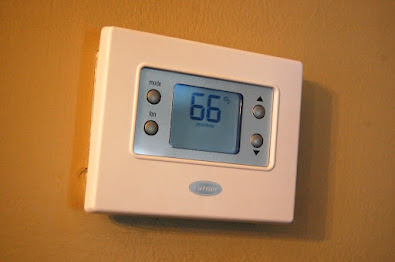How to balance an HVAC system following simple tips
An HVAC system is an important appliance in any home. It manages the temperature in the house. You will suffer from too much heat or cold if you do not have an HVAC system. In order to balance your HVAC system, some simple tips can be followed.
It's easy to find ways to improve your home's heating and cooling system by following some simple tips. Following these tips can keep your home comfortable all winter long.
10 Tips to Balance an HVAC System
1. Check Ventilation Systems
An inefficient ventilation system may create stale air inside your house. Look around your home and make a note of where the air escapes. Is there a hot spot? Could the vent ducts become blocked due to dust build-up? Are they clear enough to allow for complete air circulation?
Inspect your vents in windowsills, doors, bathrooms, attics, crawl spaces, basements, garages, and the exterior roof line, if applicable. You can purchase tools that measure indoor air quality online or look for those sold at hardware stores. These devices will help you locate leaks and adjust the size of openings to maximize airflow.
2. Check The Filter Regularly
Make sure that the filter installed in your duct system is clean. If you find any debris stuck, remove it using a soft cloth. Avoid using harsh chemicals to get rid of debris on filters, as they could cause damage to the components.
3. Seal Window Frames
Windows and doors are great ways to let fresh air enter your house, but they can also allow moisture-laden air to leak out. Sealing window frames can prevent condensation buildups inside your house, ensuring that windows don’t become cold spots. If you notice mold forming around a door frame, call a professional right away to fix the problem.
4. Take care of the heating coils
When replacing a coil, ensure the old one doesn't get left inside; dispose of it carefully. Inspect the fins for wear and tear. If they look worn out, consider having them replaced. Replace the heating elements annually.
5. Repair cracks and holes in the basement ceiling
Basements often leak moisture into the crawlspace and cause mold to develop. Cracks in the foundation wall allow cold air to enter. Holes in the floor allow cold air to seep into the home. Fix these issues as soon as possible to avoid damage to the structure of the building and to prevent costly repairs down the line.
6. Know Your Airflow
If you need to know what size blower motor is best for your home, get some help. Get out your duct tape and trace where air enters your home and how far it travels before exiting again. Next, determine if your system is getting enough air at each location. If not, consider upgrading or installing filters or having someone install a return-air grille.
7. Clean the Dryer Vent
Dryers vent through the outside wall of your house, which means they're exposed to cold weather, rain, snow, salt, and other airborne contaminants. A clogged dryer vent can cause condensation inside the house and mold growth. Keep these things in mind while cleaning your dryer vent.
8. Understand the Benefits
A good quality system can save you hundreds of dollars over time and extend its lifespan by years. Investing in a high-quality system will pay for itself many times over, as you'll spend less money replacing parts. Also, a quality system will provide cooler air, which is helpful in preventing the growth of mold, mildew, and bacteria that thrive in warm temperatures. And lastly, a quality system will give you peace of mind knowing that your family will always stay comfortable and protected.
9. Make Sure It Works
Make sure your system performs appropriately before adding it to your budget. Purchase a test kit from your local hardware store, take a friend with you, and make sure everything checks out. Remember to turn it off when testing!
10. Consider the Size of Your Room
A larger room requires a bigger blower unit, which may cost significantly more than smaller systems. An oversized system could put a strain on your AC compressor or even damage it. Be sure you have enough power to run both your AC and heater. Start low and gradually increase them until your home reaches thermostat settings. You'll want to make sure the space is well insulated to ensure proper airflow.
Conclusion
In conclusion, the above simple tips must help to balance an HVAC system. By following these tips, you can ensure your home stays warm and comfortable during this harsh weather.




Comments
Post a Comment